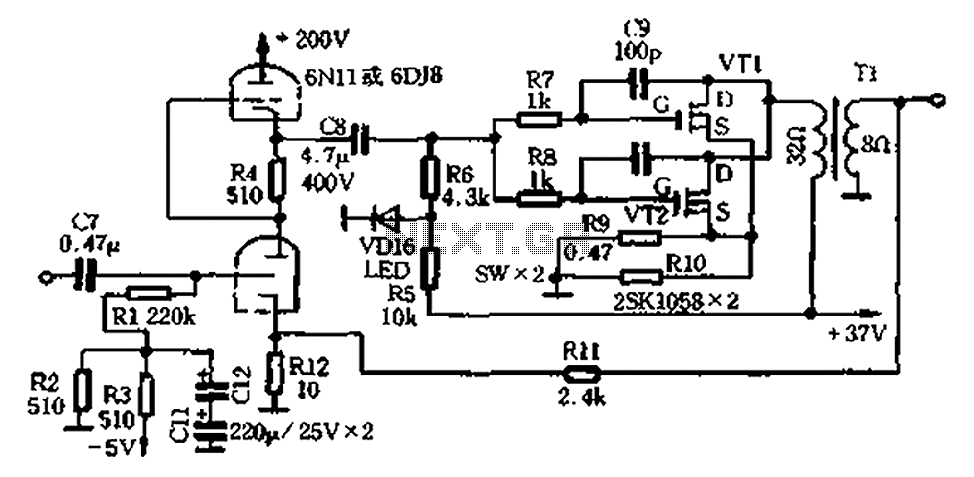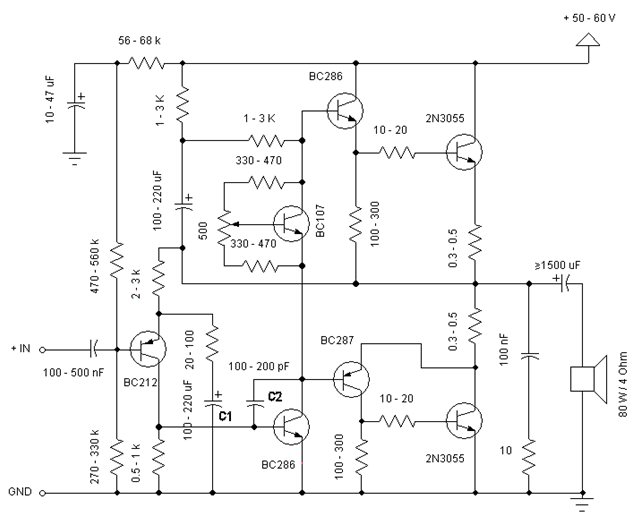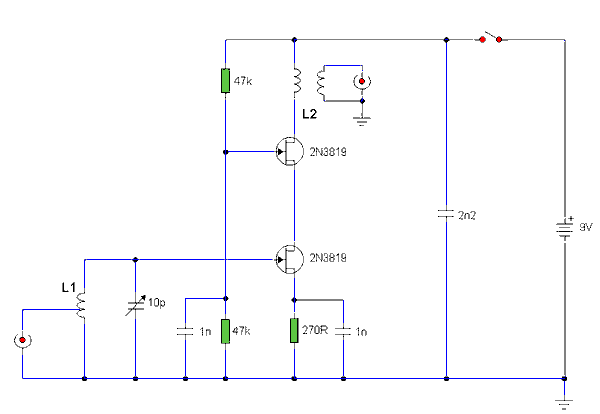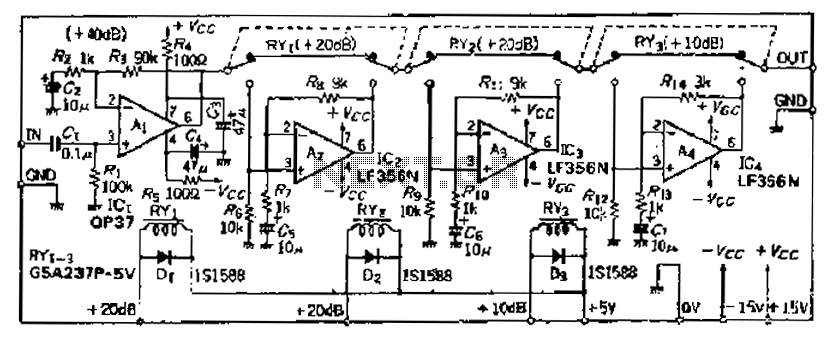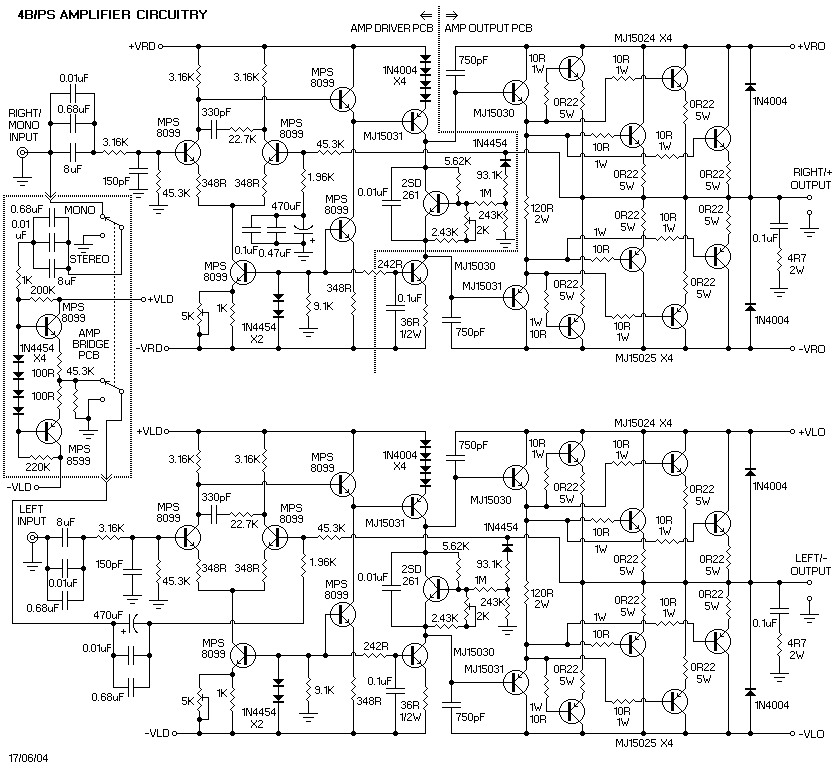
24W amplifier using TDA1516
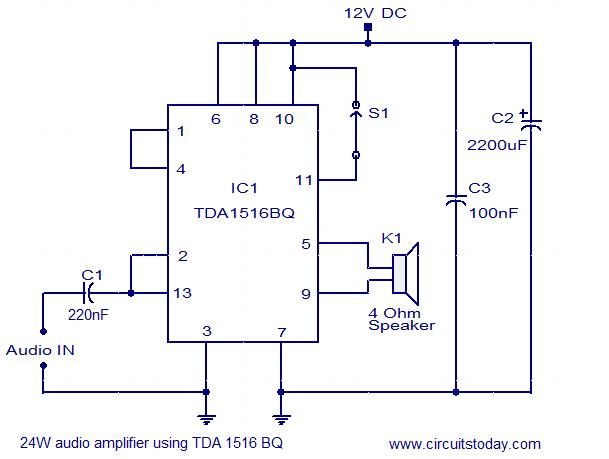
The circuit diagram illustrates a simple 24W mono amplifier utilizing the TDA1516 integrated circuit. The TDA1516 is a Class B power amplifier packaged in a 13-pin SIL configuration. This integrated circuit includes several beneficial features, including short circuit protection, load dump protection, thermal protection, and reverse polarity protection. In this design, the IC is configured in BTL (Bridge-Tied Load) mode to provide 24W of power to a 4-ohm speaker. The amplifier operates from a 12V DC power supply, making it ideal for car audio applications.
The TDA1516 integrated circuit is specifically designed for high-efficiency audio amplification, making it suitable for various applications, particularly in automotive environments where space and power efficiency are critical. The BTL configuration allows for increased output power by effectively utilizing both halves of the amplifier, thus delivering a higher voltage swing across the speaker.
The circuit typically includes additional components such as capacitors for filtering and stability, resistors for setting gain and biasing, and possibly a heat sink to manage thermal dissipation. The power supply section should be designed to provide a stable 12V DC output, capable of delivering sufficient current to meet the demands of the amplifier under full load conditions.
Moreover, the inclusion of protective features enhances the reliability of the amplifier. Short circuit protection prevents damage in case of speaker wire faults, while load dump protection safeguards against voltage spikes that can occur when a vehicle's electrical system is interrupted. Thermal protection ensures the amplifier operates within safe temperature limits, preventing overheating during prolonged use. Reverse polarity protection is crucial in automotive applications to avoid damage from incorrect power supply connections.
In summary, this 24W mono amplifier circuit using the TDA1516 is a robust solution for car audio systems, combining efficient amplification with essential protective features to ensure durability and performance.Here is the circuit diagram of a simple 24W mono amplifier using IC TDA1516. The TDA1516 is an integrated class B power amplifier in a 13 pin SIL package. The IC has many useful features such as short circuit protection, load dump protection, thermal protection, reverse polarity protection etc. Here the IC is wired in BTL mode to deliver 24W of pow er into a 4 ohm speaker. This amplifier can be operated from a 12V DC supply and this makes it suitable for car audio applications. 🔗 External reference
The TDA1516 integrated circuit is specifically designed for high-efficiency audio amplification, making it suitable for various applications, particularly in automotive environments where space and power efficiency are critical. The BTL configuration allows for increased output power by effectively utilizing both halves of the amplifier, thus delivering a higher voltage swing across the speaker.
The circuit typically includes additional components such as capacitors for filtering and stability, resistors for setting gain and biasing, and possibly a heat sink to manage thermal dissipation. The power supply section should be designed to provide a stable 12V DC output, capable of delivering sufficient current to meet the demands of the amplifier under full load conditions.
Moreover, the inclusion of protective features enhances the reliability of the amplifier. Short circuit protection prevents damage in case of speaker wire faults, while load dump protection safeguards against voltage spikes that can occur when a vehicle's electrical system is interrupted. Thermal protection ensures the amplifier operates within safe temperature limits, preventing overheating during prolonged use. Reverse polarity protection is crucial in automotive applications to avoid damage from incorrect power supply connections.
In summary, this 24W mono amplifier circuit using the TDA1516 is a robust solution for car audio systems, combining efficient amplification with essential protective features to ensure durability and performance.Here is the circuit diagram of a simple 24W mono amplifier using IC TDA1516. The TDA1516 is an integrated class B power amplifier in a 13 pin SIL package. The IC has many useful features such as short circuit protection, load dump protection, thermal protection, reverse polarity protection etc. Here the IC is wired in BTL mode to deliver 24W of pow er into a 4 ohm speaker. This amplifier can be operated from a 12V DC supply and this makes it suitable for car audio applications. 🔗 External reference
